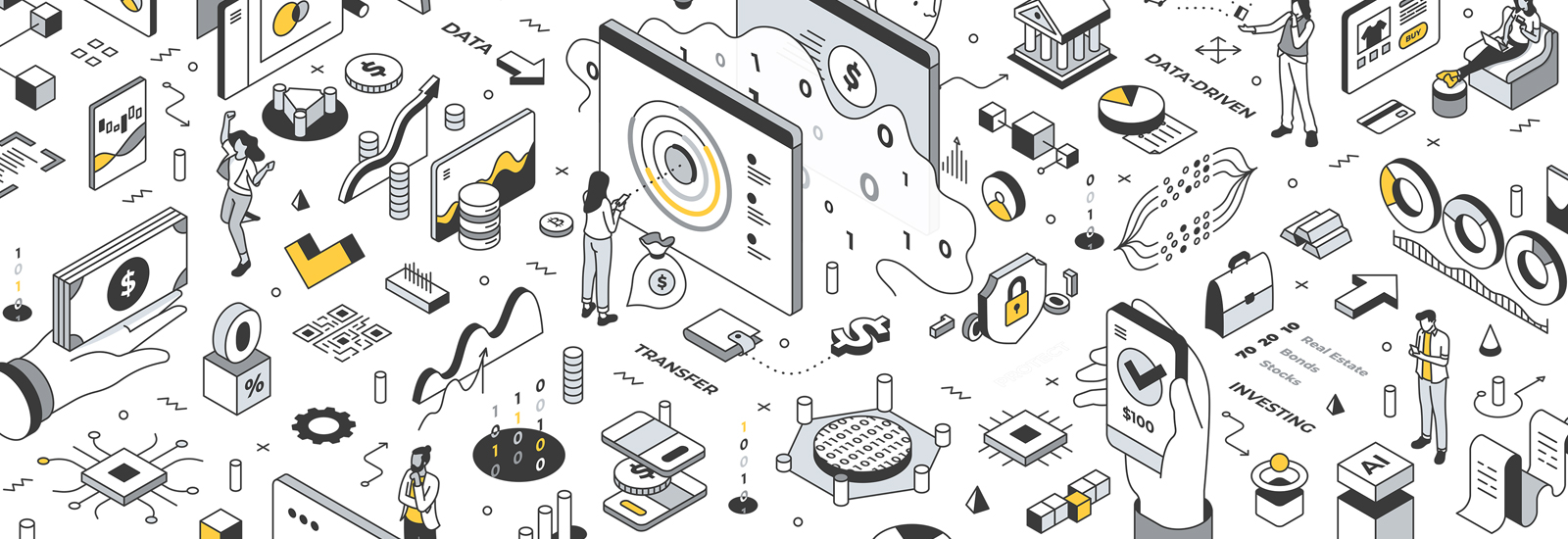Editor’s note:
This is the third and final part of a Wells Fargo Stories series focused on artificial intelligence. Read part 1: “Wells Fargo, artificial intelligence, and you.” Read part 2: “How Wells Fargo builds responsible artificial intelligence.”
Key takeaways
- Artificial intelligence has become a daily essential for millions of people, and it’s only getting bigger. AI is a strategic investment driving what is forecasted to be a multitrillion-dollar market in less than a decade.
- Wells Fargo experts expect AI technology to transform the banking sector. Some of the forthcoming changes are expected to simplify everyday banking, expand access to credit, and fight fraud.
- Mergers & acquisitions (M&A) are expected to rise among established financial services players and new financial technology, or fintech, companies, Wells Fargo experts said.
Believe it or not, “artificial intelligence” was first coined nearly seven decades ago. But it only took a couple of years for AI to go from an idea to an everyday tool for millions of Americans.
Today, more than one in four U.S. adults uses AI almost constantly or several times a day, according to Pew Research Center. Just a couple of years ago, 42% hadn’t heard a single thing about the popular large language model (LLM) ChatGPT.
Along with a huge rise in users, new AI technology firms and established companies continue to increase their investment into AI, Wells Fargo included.
“In this next wave of AI, you’ll probably see a lot of new technologies get funded and established strategic players acquire early-stage companies at the same time,” said Jeff Spurlock, a managing director in Wells Fargo’s Corporate & Investment Bank who focuses on the fintech sector. “The financial services sector has the potential to experience a leapfrog effect from AI that’s greater than what other industries will experience, in my view.”
Banking is especially primed to see more AI activity. Case in point: Half of financial services companies say they view AI as critical to their future successes, according to a 2025 NVIDIA survey of the industry. Virtually all (98%) of those surveyed said they’ve increased their spending on AI this year. In fact, more than half (52%) are investing in generative AI.
Spurlock said financial services has yet to go through a true digital transformation like other industries.
“Banking today is still very much a human-to-human, relationship-driven process,” he said. “AI will enable banks to better anticipate issues and deliver more highly curated experiences.”
3 AI growth opportunities in banking
Here are just a few ways AI can level up your banking experience.

1. Customer user experience (UX)
Whether booking a flight or applying for a credit card, customers expect a simple experience. But the banking sector’s digital and mobile platforms are behind those of other, less-regulated industries, Spurlock said. That’s in part because many consumers haven’t fully embraced new ways of banking and because so far technology hasn’t taken out the friction. AI could change this.
There’s a “massive area” for AI to make banking more proactive, all while managing risks appropriately, Spurlock said. For example, take new account applications: AI can automate tasks, streamline processes, and help customers collect information.
“There are a lot of pain points,” he said. “New banking customers may be thinking, ‘This process is taking too long. I’ve got to pick up my kids from school. I don’t have this information readily available. I’ll do it later’ and then they forget about it.”
Wells Fargo, like many banks, is harnessing the multifaceted capabilities of AI to offer ultra-personalized experiences that help anticipate customer needs and do so responsibly.

2. Lending
Fintech firms are increasingly looking to better evaluate a credit applicant’s ability and willingness to repay and speed up the loan underwriting process. AI could help lenders better understand borrowers, including those with limited credit history or without credit scores, and responsibly expand credit access.
“If you can better engage a community or through a digital channel, the more you can use some of these emerging technologies,” Spurlock said. “Through a lot of computational power, there’s got to be better ways to make more informed or comprehensive credit decisions.”

3. Fraud
Wells Fargo is targeting fraudulent behavior, from authenticating new customer accounts to validating transaction details. AI could help spot fraud red flags, especially when it comes to payments.
“Fraud in the payments world is a massive problem. Where can AI help mitigate fraudulent behavior and transactions? There are a lot of opportunities, from the front end to the back end,” Spurlock said. “A lot of people expect AI to move this forward by leaps and bounds.”
Why AI will drive fintech M&A
For corporates and private equity and venture capital investors, AI’s potential is massive: There’s a multitrillion-dollar total addressable market in fintech up for grabs thanks to AI.
By 2032, the global AI market is projected to grow to $1.7 trillion, according to a 2025 Fortunate Business Insights forecast. Other estimates put that number as high as $2.2 trillion or $2.4 trillion.
In the near future, Spurlock said, expect the banking and fintech sectors to see a steady stream of M&A activity. A lack of high-powered infrastructure, AI data scientists, and proprietary data means established companies may consider acquiring emerging firms and fintech platforms, and financial sponsors will consider investing in them. As the saying goes, it’s easier to buy than to build.
Another avenue for established players like banks is partnering with fintech businesses. By plugging fintech technology solutions into their platforms, banks can connect their own customers to the latest innovations. Wells Fargo has already begun investing in this more dynamic, collaborative vision of banking.
“As an established player in banking, we value a collaborative ecosystem of partnerships with innovative vendors, industry accelerators, and academic research institutions,” said Chintan Mehta, head of Wells Fargo Digital Technology and Innovation. “Embracing the interconnectedness within the AI community allows Wells Fargo to be at the forefront of AI advancement that supports our business growth and ultimately offer the ultra-tailored experiences our customers desire.”






